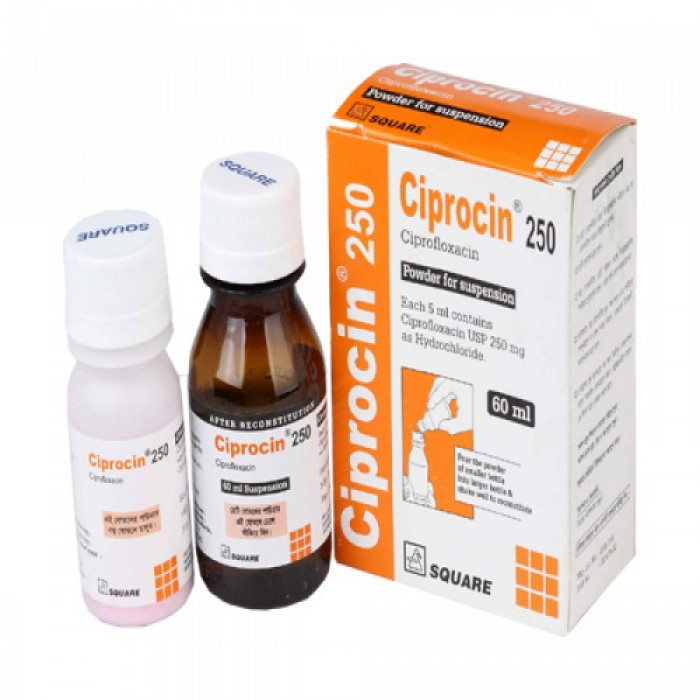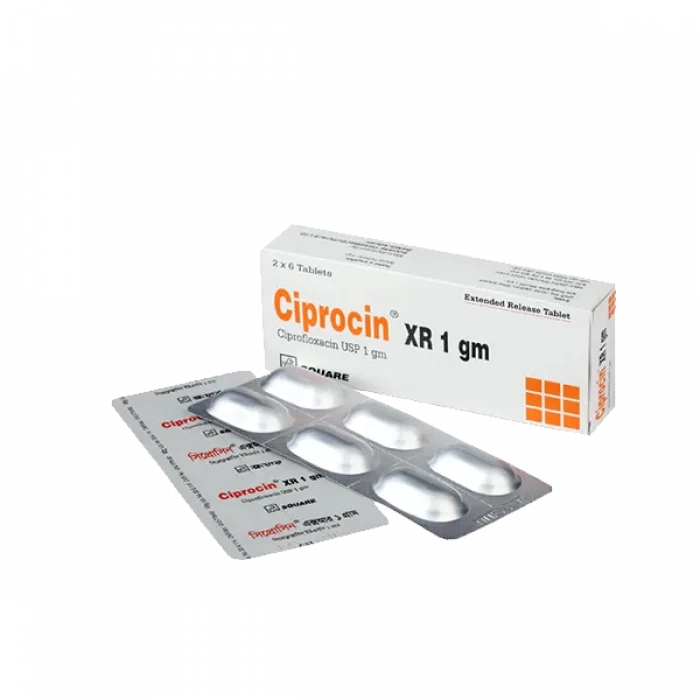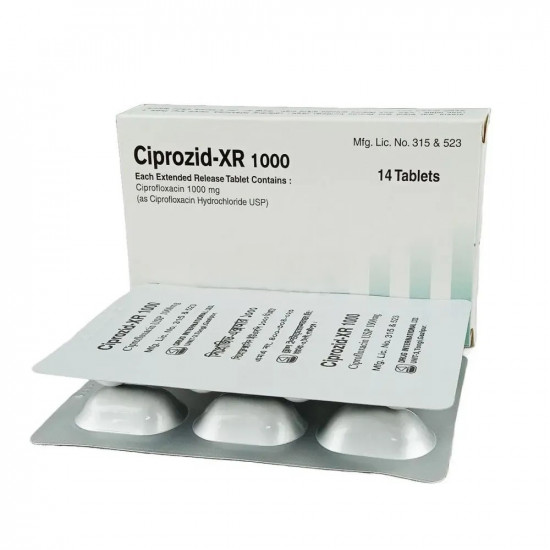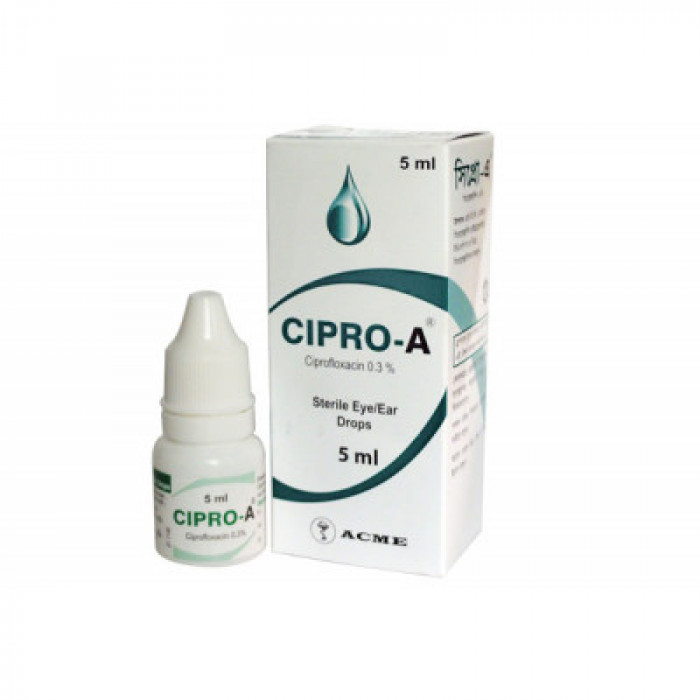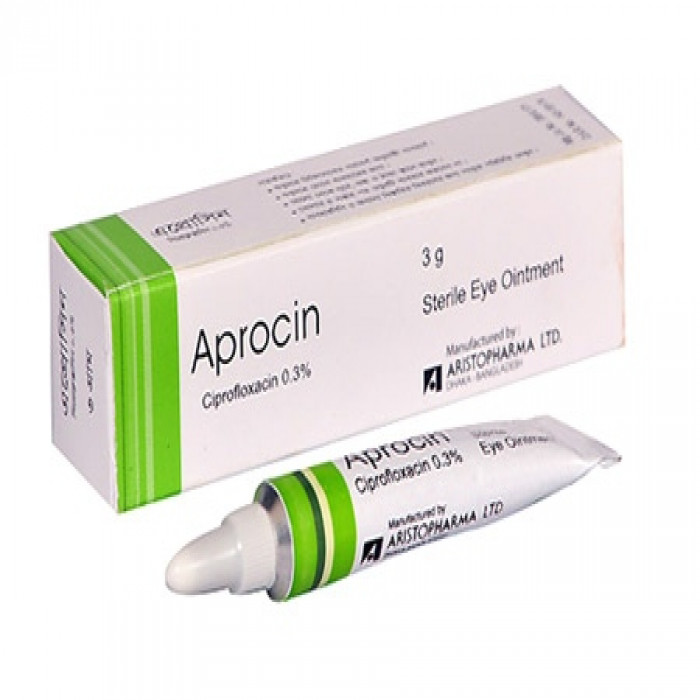
✔ 100% Authentic Product
👁️ Currently Viewing 1929
Manufacturer/Distributor: Aristopharma Limited
Generic Name: Ciprofloxacin (Eye/Ear)Ciprofloxacin (Eye/Ear) 3gm
Discount
Price: ৳ 33
MRP:
৳
35
5%
Off

100% Genuine Products, Guaranteed

Safe & Secure Payments, Always

Fast, Secure & Efficient Delivery

Proper Packaging
 Cash on Delivery - All over Bangladesh
Cash on Delivery - All over Bangladesh Regular Delivery - 12-24 Hours, Dhaka City* Charge Tk.39-59
Regular Delivery - 12-24 Hours, Dhaka City* Charge Tk.39-59 Regular Delivery - 24-48 Hours, Other Cities* Charge Tk.99-110
Regular Delivery - 24-48 Hours, Other Cities* Charge Tk.99-110
 ফ্রি ডেলিভারিঃ - ৯৯৯ টাকা+ অর্ডারে, ঢাকা
শহরে
ফ্রি ডেলিভারিঃ - ৯৯৯ টাকা+ অর্ডারে, ঢাকা
শহরে ফ্রি ডেলিভারিঃ - ২৯৯৯ টাকা+ অর্ডারে, ঢাকার
বাহিরে
ফ্রি ডেলিভারিঃ - ২৯৯৯ টাকা+ অর্ডারে, ঢাকার
বাহিরে
100% Genuine Products, Guaranteed
Safe & Secure Payments, Always
Fast, Secure & Efficient Delivery
Proper Packaging
 Cash on Delivery - All over Bangladesh
Cash on Delivery - All over Bangladesh Regular Delivery - 12-24 Hours, Dhaka City* Charge Tk.39-59
Regular Delivery - 12-24 Hours, Dhaka City* Charge Tk.39-59 Regular Delivery - 24-48 Hours, Other Cities* Charge Tk.99-110
Regular Delivery - 24-48 Hours, Other Cities* Charge Tk.99-110 ফ্রি ডেলিভারিঃ - ৯৯৯ টাকা+ অর্ডারে, ঢাকা
শহরে
ফ্রি ডেলিভারিঃ - ৯৯৯ টাকা+ অর্ডারে, ঢাকা
শহরে ফ্রি ডেলিভারিঃ - ২৯৯৯ টাকা+ অর্ডারে, ঢাকার
বাহিরে
ফ্রি ডেলিভারিঃ - ২৯৯৯ টাকা+ অর্ডারে, ঢাকার
বাহিরে
✅ Description:
Aprocin is an antibiotic, used in the treatment of bacterial eye/ear infections. It relieves the symptoms of the infection by stopping the further growth of the causative microorganisms. Aprocin is for external use only. Take it in the dose and duration as advised by your doctor. Hold the dropper close to the eye/ear without touching it. Gently squeeze the dropper and place the medicine inside the lower eyelid or ear. Wipe off extra liquid. Avoid skipping any doses and finish the full course of treatment even if you feel better. It may cause application site irritation and burning sensation immediately following application. However, these side effects are temporary and usually subside on their own. Inform your doctor if they persist for a longer duration. While using for eye infections, it may cause short term blurring of vision when first used. Use caution before driving or using machines. Do not wear contact lenses while using it.
Uses of Aprocin
- Bacterial eye / ear infections
Side effects of Aprocin
Common
- Application site irritation
- Burning sensation
How to use Aprocin
This medicine is for external use only.Take it in the dose and duration as advised by your doctor. Check the label for directions before use. Hold the dropper close to the eye/ear without touching it. Gently squeeze the dropper and place the medicine inside the lower eyelid or ear. Wipe off extra liquid.
How Aprocin works
Aprocin is an antibiotic. It treats bacterial eye/ear infections by preventing the bacteria from dividing and repairing. It does so stopping the action of a bacterial enzyme called DNA-gyrase.
What if you forget to take Aprocin?
If you miss a dose of Aprocin, take it as soon as possible. However, if it is almost time for your next dose, skip the missed dose and go back to your regular schedule. Do not double the dose.
Quick Tips
- You have been prescribed Ciplox Eye/Ear Drops for the treatment of bacterial infections of the eye/ear.
- Do not skip any doses and finish the full course of treatment even if you feel better.
- Do not touch the tip to any surface, or to your eye/ear, to avoid contamination.
- You should continue using the medicine for 48 hours after your symptoms have cleared up.
- Talk to your doctor if your symptoms haven't started to improve within two days of starting treatment, if they get worse during treatment or if you get another eye /ear infection.
- Throw away any medicine left at the end of the course.
- If using Ciplox Eye/Ear Drops for eye:
Brief Description
Indication
Otitis media, Superficial ophthalmic infections, Otitis externa
Adult Dose
Bacterial Conjunctivitis Solution: 1-2 drops instilled into conjunctival sac(s) q2hr with patient awake on days 1-2, then 1-2 drops q4hr with patient awake on days 3-7 Ointment: 0.5-in. (1.25-cm) ribbon applied into conjunctival sac q8hr on days 1-2, then 0.5-in. (1.25-cm) ribbon q12hr on days 3-7 Corneal Ulcers (Keratitis) Solution: 2 drops q15min for 6 hours, then 2 drops q30min for remainder of day 1, then 2 drops q1hr on day 2, and finally 2 drops q4hr on days 3-14 Ointment: Not indicated for keratitis
Child Dose
Bacterial Conjunctivitis <1 year: Safety and efficacy not established >1 year (solution): 1-2 drops instilled into conjunctival sac(s) q2hr with patient awake on days 1-2, then 1-2 drops q4hr with patient awake on days 3-7 >2 years (ointment): 0.5-in. (1.25-cm) ribbon applied into conjunctival sac q8hr on days 1-2, then 0.5-in. (1.25-cm) ribbon q12hr on days 3-7
Contraindication
Ciprofloxacin is contraindicated in patients who have hypersensitivity to Ciprofloxacin or other quinolones.
Mode of Action
Ciprofloxacin promotes breakage of double-stranded DNA in susceptible organisms and inhibits DNA gyrase, which is essential in reproduction of bacterial DNA.
Precaution
Prolonged use of Ciprofloxacin may result in overgrowth of nonsusceptible organisms including fungi. Ciprofloxacin should be discontinued at the first appearance of a skin rash or any other sign of hypersensitivity reaction. Not for injection into the eye. Lactation: Drug is distributed into milk; use with caution
Side Effect
>10% Burning,Ciprofloxacin precipitate in superficial portion of corneal defect,Stinging 1-10% Conjunctival hyperemia,Crystals or scales on eyelashes,Foreign-body sensation,Itching,Keratopathy or keratitis,Lid margin crusting,Unpleasant taste after instillation <1% Corneal infiltrates,Corneal staining,Decrease in vision,Lid edema,Ocular discomfort,Photophobia,Sensitivity reactions,Tearing
Pregnancy Category Note
Pregnancy Data are not available regarding use in pregnant women; owing to negligible systemic exposure associated with otic administration of ciprofloxacin, minimal risk is expected Lactation Ciprofloxacin is excreted in human milk with systemic administration; however, owing to negligible systemic exposure after otic administration, breastfed infants should not be affected
Interaction
May increase plasma concentrations of CYP1A2 substrates (e.g. clozapine, ropinirole, theophylline). Enhances effect of oral anticoagulants (e.g. warfarin) and glibenclamide. Increased toxicity of methotrexate. Plasma concentrations may be increased by probenecid. Reduced absorption w/ oral multivitamins and mineral supplements containing divalent or trivalent cations (e.g. Fe, Zn, Ca) and antacids containing Al, Ca or Mg. Concomitant use w/ class IA antiarrhythmics (e.g. quinidine, procainamide), class III antiarrhythmics (e.g. amiodarone, sotalol), TCAs, macrolides and antipsychotics may result in additive effects on QT interval prolongation. Concurrent use w/ corticosteroids may increase risk of severe tendon disorders. Increased risk of CNS stimulation w/ NSAIDs. Altered serum concentrations of phenytoin. Potentially Fatal: Marked elevation in serum levels of tizanidine which is associated w/ potentiated hypotensive and sedative effect.
⚠️Disclaimer:
At ePharma, we’re committed to providing accurate and accessible health information. However, all content is intended for informational purposes only and should not replace medical advice from a qualified physician. Please consult your healthcare provider for personalized guidance. We aim to support, not substitute, the doctor-patient relationship.








